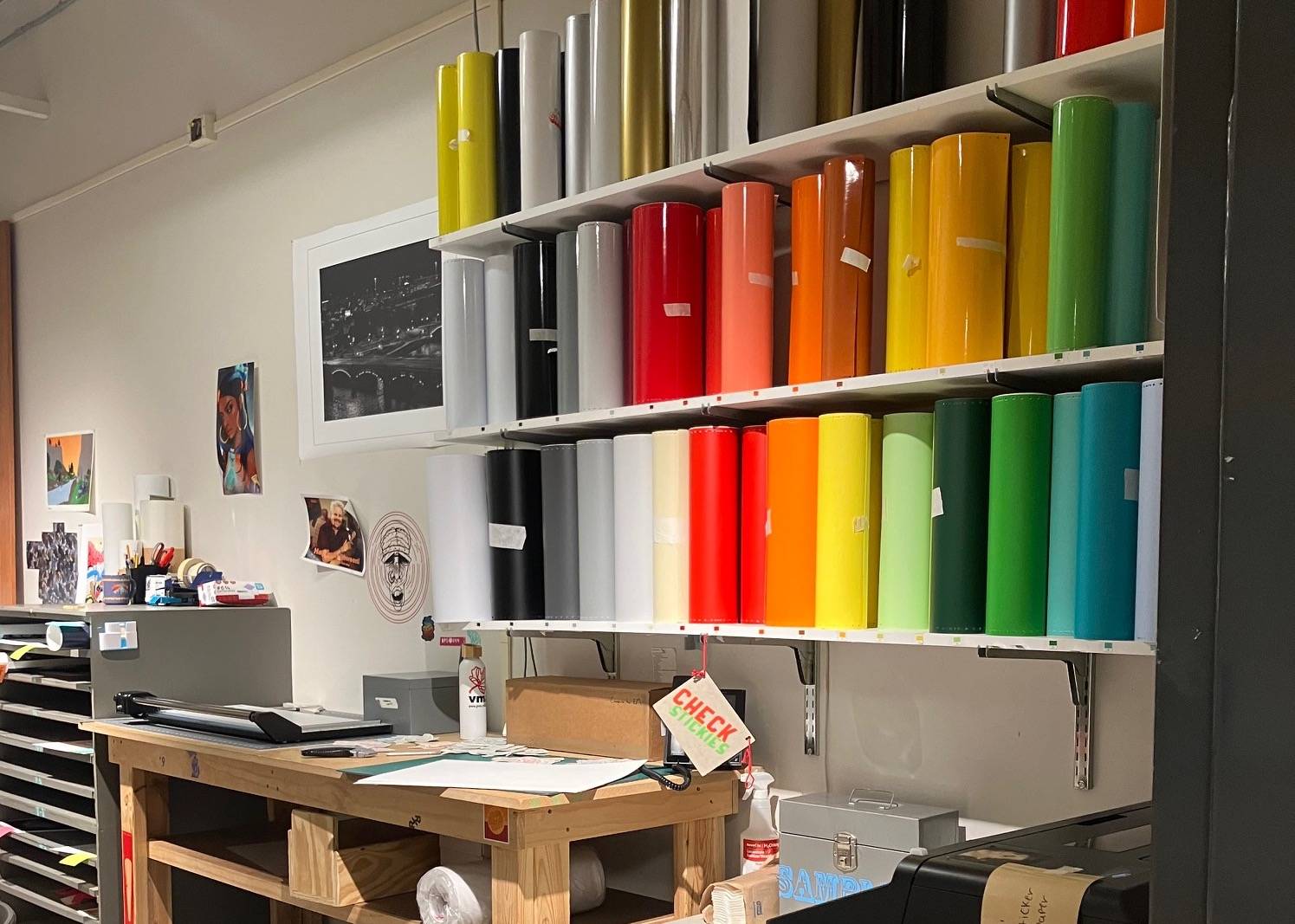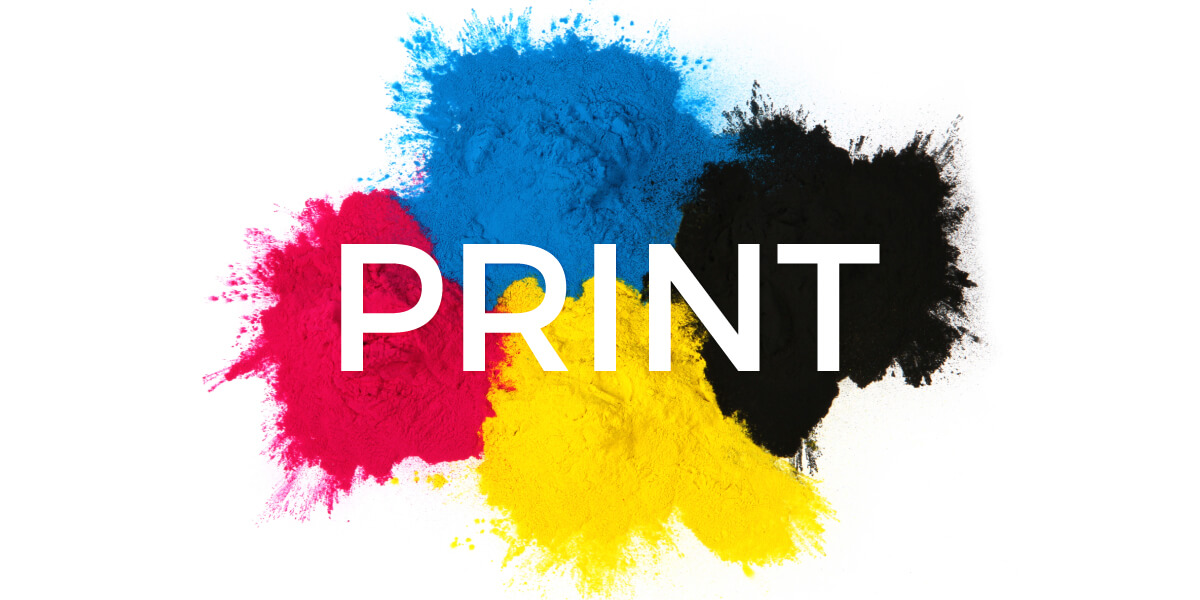6 Creative Display Ideas You Can Get at a Print Shop Near Me
6 Creative Display Ideas You Can Get at a Print Shop Near Me
Blog Article
The Ultimate Overview to Using Printing Solutions for Customized Art Prints
Guiding with the world of custom art prints requires a clear understanding of various printing services. Musicians should take into consideration variables such as printing techniques and products to attain the preferred result. Each decision, from art work prep work to shade calibration, plays an essential duty in the end product. As they check out these elements, musicians can reveal the possibility for their work to attach with target markets in a purposeful way. What actions can they take to ensure their prints stand apart?
Comprehending Different Sorts Of Printing Providers
Although many people may neglect the ins and outs of printing solutions, comprehending the numerous kinds readily available is essential for anybody aiming to produce personalized art prints. One of the most common kinds include electronic printing, balance out printing, and screen printing. Digital printing is favored for its fast turnaround and ability to create high-grade photos directly from electronic data, making it suitable for little runs. On the other hand, balanced out printing offers exceptional image high quality and is cost-effective for larger quantities, utilizing plates to transfer ink onto paper. Screen printing, typically utilized for textiles and marketing things, entails pressing ink through a mesh display, permitting for vivid shades and structures. Each approach has its special benefits and restrictions, making it important for artists and designers to assess their specific demands, such as amount, desired high quality, and budget, prior to choosing a printing solution that lines up with their artistic vision.
Picking the Right Materials for Your Prints
Selecting the ideal products is necessary for accomplishing premium customized art prints. Understanding the numerous sorts of paper and the relevance of ink high quality can significantly influence the result. Artists have to take into consideration these factors to assure their vision is properly represented in the published piece.
Paper Types Explained
Picking the ideal paper kind is crucial for accomplishing the desired aesthetic and sturdiness in custom art prints. Different options exist, each offering distinct features. For example, glossy paper improves shade vibrancy and detail, making it excellent for photography prints. On the other hand, matte paper provides a softer surface, which is more effective for art work that calls for subtlety and texture. Art paper, usually made from cotton or alpha cellulose, supplies archival top quality and appropriates for reproducing complex details in paintings (Print Shop Near Me). In addition, specialty documents, such as watercolor or canvas, can include one-of-a-kind aesthetic effects. Eventually, picking the appropriate paper kind will considerably affect the last presentation, making certain that the art work is both visually appealing and resilient
Ink Quality Matters
Ink high quality plays an important duty in the general success of custom art prints. High-quality inks ensure dynamic colors, sharp details, and long life, which are vital for showcasing imaginative job. When choosing printing services, artists need to consider pigment-based inks over dye-based options, as they use much better fade resistance and color stability. Furthermore, the option of ink ought to complement the chosen paper type, boosting the print's aesthetic influence. Environmental aspects, such as moisture and temperature, can also affect ink performance; consequently, musicians must ask about ink formulations that resist these elements. Inevitably, buying premium ink quality can elevate the last item, ensuring that the art print remains true to the artist's vision for years ahead.
Checking Out Printing Techniques: Digital vs. Conventional
While both electronic and traditional printing techniques have their one-of-a-kind advantages, the choice on which technique to utilize usually depends upon the details requirements of the artwork. Digital printing masters flexibility and rate, permitting fast turn-around times and the ability to publish on demand. This method is specifically valuable for artists that call for special pieces or little runs, as it gets rid of the need for considerable setup processes.Conversely, traditional printing strategies, such as lithography and screen printing, usually produce richer textures and shades, interesting artists looking for a more tactile and authentic finish. These techniques can enhance the deepness and quality of the artwork, making them ideal for bigger editions. Furthermore, traditional techniques might provide an unique visual that digital printing occasionally struggles to replicate. Inevitably, the selection in between these strategies ought to think about factors like desired quality, quantity, and artistic intent, assisting musicians to the most appropriate choice for their projects.

Preparing Your Artwork for Printing
Effectively preparing artwork for printing requires mindful focus to detail, regardless of the chosen printing technique. Artists need to ensure that their documents are produced at the suitable resolution, usually 300 DPI, to keep intensity and clearness. The right shade mode, usually CMYK for print, is important to accomplish the wanted shade precision. Artists should also consider the dimensions of the art work, making certain to consist of hemorrhage areas if needed, to stop any kind of undesirable white sides after trimming.Additionally, documents layouts play an important duty; TIFF and PDF are often preferred for high-grade prints. Prior to entry, it is necessary to examine the artwork for any flaws or unwanted aspects. By carefully examining these facets, artists can improve the possibility of their prints aligning with their creative vision, inevitably causing a successful printing outcome.
The Relevance of Shade Calibration and Proofing
Color calibration and proofing are important action in the printing process, as they assure that the final result accurately mirrors the artist's vision. Correct shade calibration guarantees that the shades showed on the display match those that will certainly be published. This process entails changing the display settings, printer profiles, and inks to attain a regular shade representation.Additionally, proofing allows artists to sneak peek their job before the last print run. This phase allows them to detect and fix any discrepancies in detail, shade, or saturation, therefore decreasing expensive mistakes. By utilizing electronic or hard-copy proofs, musicians can make informed decisions concerning changes needed for perfect results.Incorporating shade calibration and proofing into the printing operations not just enhances the high quality of the end product however additionally cultivates a reputable collaboration in between the artist and the printing service, guaranteeing fulfillment and fidelity to the initial artwork.
Selecting the Perfect Size and Format for Your Prints

Marketing and Selling Your Customized Art Prints
Advertising and marketing personalized art prints calls for a strong brand name identification to attract attention in an open market. Reliable on the internet promo approaches and the strategic use of social networks systems can substantially enhance presence and engagement. By integrating these aspects, musicians can produce an engaging presence that attracts potential customers.
Building Your Brand Identification
Establishing a strong brand identity is essential for musicians looking to successfully market and offer their personalized art prints. This identity encompasses the musician's one-of-a-kind design, values, and tale, which resonate with prospective buyers. Artists need to create a natural visual visibility throughout all platforms, including logo designs, color pattern, and typography that show their imaginative vision. In addition, a clear mission statement aids connect the artist's purpose and passion. Engaging storytelling regarding the inspiration behind each piece can promote psychological links with the target market. Consistency in messaging, whether on social networks or packaging, enhances recognition and trust. By carefully curating their brand identification, musicians can distinguish themselves in a competitive market, drawing in devoted consumers who appreciate their artistry.
Effective Online Promotion Strategies
What strategies can musicians utilize to effectively promote their customized art prints online? Establishing an expert website showcasing the art work is essential. This website must include high-quality images and detailed summaries to involve potential customers. Furthermore, artists can use email marketing by constructing a subscriber checklist to share updates, promotions, and new releases. Collaborating with blog owners and influencers in the art community can broaden reach and integrity. Providing unique pieces or limited-time price cuts can likewise develop seriousness, motivating purchases. Maximizing content for search engines via relevant search phrases will enhance presence. Preserving a blog about the imaginative process can attract art fanatics, cultivating a deeper connection with the audience and enhancing the overall advertising and marketing approach.
Using Social Media Site Operatings Systems
Social media platforms act as powerful tools for artists seeking to market and offer their customized art prints. By leveraging systems like Instagram, Facebook, and Pinterest, musicians can display their job to a substantial target market. Engaging her explanation visuals and critical hashtags can boost visibility, attracting possible buyers to their accounts. Routinely uploading material, such as behind the curtain procedures or brand-new styles, assists keep target market passion and fosters a feeling of area. official source Furthermore, artists can use targeted advertising to reach particular demographics, improving the chances of sales. Collaborations with influencers or various other musicians can additionally magnify exposure. Ultimately, a well-curated social media visibility not just advertises customized art prints yet likewise constructs a devoted customer base over time.
Regularly Asked Concerns

Just how Do I Locate Trustworthy Printing Service Providers?
To locate trusted printing company, one ought to investigate online evaluations, look for recommendations from peers, contrast portfolios, request examples, and assess customer support responsiveness. This complete method warranties notified choices and acceptable end results.
What Is the Normal Turnaround Time for Custom-made Prints?
The common turn-around time for customized prints differs by service provider, yet usually varies from a few days to 2 weeks. Variables influencing this consist of order dimension, complexity, and the particular printing strategies made use of.
Can I Get a Reimbursement if I'm Not Completely satisfied With My Prints?
The question of acquiring a reimbursement for unsatisfactory prints typically relies on the particular printing service's plans. Lots of firms offer satisfaction warranties, while others might have strict return conditions, emphasizing the significance of examining terms beforehand.
Exist Any Hidden Costs Related To Printing Solutions?
Many printing services may include covert costs such as setup charges, delivery costs, or added costs for details products. It's essential for clients to make inquiries concerning all possible costs prior to finalizing their order.
How Can I Guarantee My Prints Are Environmentally Pleasant?
To guarantee prints are eco-friendly, Full Report one should pick environment-friendly inks, recycled paper, and lasting printing practices. Looking into printing solutions that focus on sustainability and acquiring accreditations can even more ensure marginal environmental impact in the printing procedure. Guiding with the globe of personalized art prints calls for a clear understanding of different printing solutions. Lots of people might neglect the complexities of printing solutions, recognizing the different kinds offered is necessary for anyone looking to create personalized art prints. The most typical types consist of digital printing, counter printing, and screen printing. Successfully preparing art work for printing requires mindful attention to information, regardless of the picked printing strategy. Prints aimed at galleries might call for common sizes to promote framing, whereas one-of-a-kind styles might appeal to collection agencies looking for something distinctive.Lastly, the printing solution's abilities must be evaluated.
Report this page